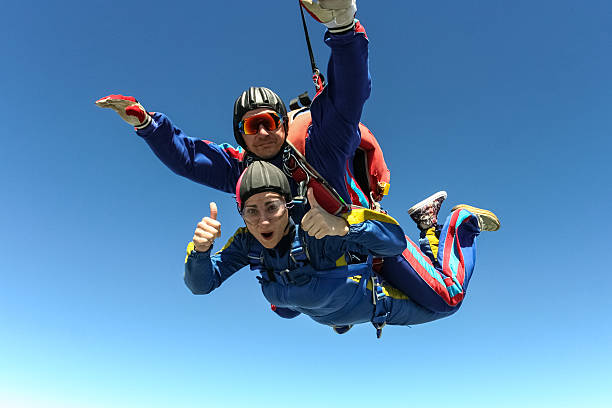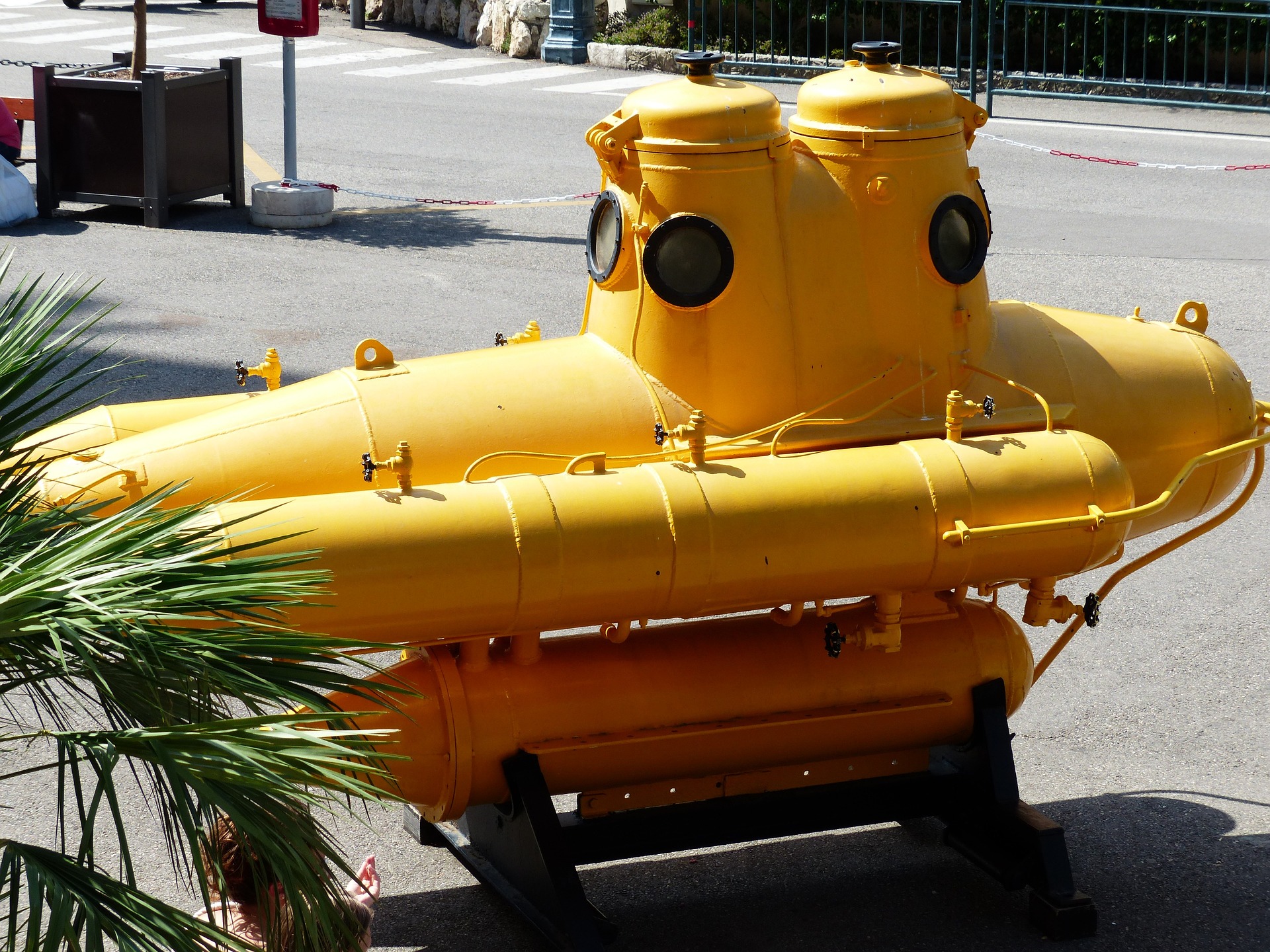Wingsuit Flying: Pushing the Boundaries of Human Flight
Imagine hurtling through the air at speeds of up to 200 miles per hour, your body mere feet away from jagged cliffs and snow-capped peaks. This is the thrilling world of wingsuit flying, a high-octane extreme sport that pushes the boundaries of human flight. Born from the dreams of skydivers and BASE jumpers seeking ever-greater thrills, wingsuit flying has evolved into a complex discipline that combines cutting-edge technology, intense physical training, and a deep understanding of aerodynamics.

The earliest attempts at wingsuit design can be traced back to the 1930s, with pioneers like Franz Reichelt and Clem Sohn experimenting with primitive “bat wing” suits. These early efforts were often dangerous and unsuccessful, leading to several fatalities. It wasn’t until the 1990s that modern wingsuit design began to emerge, thanks to the efforts of Patrick de Gayardon and other innovators who refined the concept of a fabric wing between the arms and legs.
The Science Behind the Suit
At its core, wingsuit flying relies on the principles of aerodynamics. The suit itself is designed to create an airfoil shape when the jumper spreads their arms and legs, effectively turning the human body into a wing. This shape generates lift, allowing the flyer to glide through the air at a much shallower angle than a traditional skydiver.
The key to wingsuit performance lies in the suit’s ability to increase the jumper’s surface area while minimizing drag. Modern wingsuits are made from high-tech materials like ripstop nylon and feature carefully designed air inlets that inflate the suit during flight. This inflation creates a rigid structure that maintains the wing shape and allows for precise control.
The physics of wingsuit flight involve a delicate balance between lift, drag, and gravity. As the jumper falls, they can manipulate their body position to alter these forces, allowing for changes in speed, direction, and altitude. This level of control is what sets wingsuit flying apart from other aerial sports and gives it its unique appeal.
Training and Preparation: The Path to the Sky
Becoming a wingsuit pilot is not a decision to be taken lightly. The sport requires a high level of skill, physical fitness, and mental preparation. Most wingsuit organizations recommend that aspiring pilots have at least 200 skydives under their belt before attempting their first wingsuit flight. This experience is crucial for developing the necessary body awareness and aerial skills.
Physical training for wingsuit flying focuses on core strength, flexibility, and cardiovascular endurance. Pilots must be able to maintain precise body positions for extended periods while withstanding the intense forces generated during flight. Many pilots incorporate yoga, Pilates, and strength training into their routines to build the necessary physical capabilities.
Mental preparation is equally important. Wingsuit flying demands split-second decision-making and unwavering focus. Pilots often use visualization techniques and mental rehearsal to prepare for flights, imagining every aspect of the jump from exit to landing. This mental training helps build confidence and reduces the risk of panic or indecision during critical moments.
Equipment Evolution: From Fabric to High-Tech
The evolution of wingsuit technology has been rapid and dramatic. Early suits were little more than modified skydiving jumpsuits with fabric panels sewn between the arms and legs. These primitive designs offered limited performance and control, making them suitable only for the most experienced jumpers.
Modern wingsuits are marvels of engineering, featuring multiple air inlets, sophisticated venting systems, and aerodynamic profiles optimized through wind tunnel testing and computer simulations. Manufacturers like Squirrel, Phoenix-Fly, and TonySuit continually push the boundaries of design, introducing new features like adjustable inlets, rigid leading edges, and even inflatable stability aids.
One of the most significant advancements in recent years has been the development of specialized wingsuits for different disciplines. Proximity flying suits, designed for flying close to terrain, prioritize maneuverability and precision. Distance suits, on the other hand, are optimized for maximum glide ratio, allowing pilots to cover incredible distances. Some pilots have achieved glide ratios of up to 4:1, meaning they can travel four meters forward for every meter of altitude lost.
The Disciplines of Wingsuit Flying
As the sport has matured, several distinct disciplines have emerged, each with its own challenges and appeal:
-
Wingsuit Skydiving: The most accessible form of wingsuit flying, performed from aircraft at altitudes typically between 12,000 and 14,000 feet. This discipline focuses on formation flying, acrobatics, and maximizing flight time.
-
Wingsuit BASE Jumping: Combining the thrill of BASE jumping with the extended flight time of a wingsuit. Pilots launch from fixed objects like cliffs or buildings, requiring precise navigation and split-second timing.
-
Proximity Flying: Perhaps the most visually stunning and dangerous discipline, involving flying extremely close to terrain. Pilots navigate through canyons, around rock formations, and past trees at high speeds.
-
Wingsuit Racing: A competitive discipline where pilots race through a predefined course, often marked by inflatable pylons or natural features. Speed and precision are key.
-
Altitude Records: Attempts to set records for the highest wingsuit flight, often launched from extreme altitudes requiring specialized equipment and extensive planning.
Each of these disciplines requires specific skills and equipment, and many pilots specialize in one or two areas while continually expanding their capabilities.
Safety Concerns and Risk Management
There’s no denying that wingsuit flying is an inherently dangerous activity. The combination of high speeds, low altitudes, and complex aerodynamics creates a environment where even small mistakes can have catastrophic consequences. However, the wingsuit community has made significant strides in improving safety through education, training, and technological advancements.
One of the most important safety measures is the implementation of standardized progression systems. Organizations like the United States Parachute Association (USPA) have developed guidelines that outline a step-by-step approach to wingsuit flying, ensuring that pilots gradually build the necessary skills and experience.
Technology has also played a crucial role in enhancing safety. Modern wingsuits incorporate features like cutaway systems that allow pilots to quickly jettison the suit in an emergency. Advanced altimeters and audible altitude warning devices help pilots maintain awareness of their height and speed. Some manufacturers are even experimenting with airbag systems that could provide additional protection in the event of a collision or hard landing.
Despite these advancements, wingsuit flying remains a sport with significant risks. Pilots must constantly assess weather conditions, terrain, and their own capabilities to make informed decisions about when and where to fly. Many experienced wingsuit pilots emphasize the importance of a conservative approach, gradually pushing personal limits while always maintaining a margin for error.
The Psychology of Flight: Why Pilots Take the Leap
What drives individuals to pursue such a high-risk activity? For many wingsuit pilots, the motivation goes far beyond simple thrill-seeking. The sport offers a unique combination of physical challenge, mental focus, and sensory experience that many find deeply rewarding.
Dr. Erik Monasterio, a psychiatrist and experienced wingsuit pilot, has conducted extensive research on the psychological profiles of extreme sports athletes. His studies suggest that many wingsuit pilots possess traits such as high sensation-seeking tendencies, low anxiety levels, and a strong internal locus of control. These characteristics allow them to manage the intense stress and risk associated with the sport while deriving significant personal satisfaction from their achievements.
For many pilots, wingsuit flying provides a sense of freedom and connection to the natural world that is difficult to replicate in other activities. The ability to soar through the air, navigating complex terrain with precision and grace, can be a profoundly transformative experience. Some pilots describe it as a form of moving meditation, requiring complete focus and presence in the moment.
Technological Frontiers: The Future of Wingsuit Flying
As wingsuit technology continues to advance, new possibilities are emerging that could reshape the sport. Some of the most exciting developments include:
-
Smart Suits: Integration of sensors and onboard computers to provide real-time data on flight performance, altitude, and proximity to terrain. This technology could help pilots make more informed decisions during flight and provide valuable training feedback.
-
Enhanced Aerodynamics: Ongoing research into biomimicry and advanced materials could lead to suits with even greater lift and control. Some designers are exploring concepts inspired by flying squirrels and other gliding animals.
-
Augmented Reality Displays: Heads-up displays integrated into helmets could provide pilots with navigation information, flight data, and even virtual race courses for training.
-
Propulsion Systems: While controversial within the community, some innovators are exploring the possibility of adding small jet or electric propulsion systems to wingsuits. This could potentially extend flight times and open up new flight profiles.
-
Virtual Reality Training: Advanced simulators using VR technology could allow pilots to practice complex maneuvers and emergency procedures in a safe environment before attempting them in the real world.
These technological advancements, while exciting, also raise important questions about the future direction of the sport. Many purists argue that additional technology could detract from the raw, unassisted nature of wingsuit flight. Finding the right balance between innovation and tradition will be a key challenge for the wingsuit community in the coming years.
Environmental and Ethical Considerations
As wingsuit flying has grown in popularity, it has faced increasing scrutiny regarding its environmental impact and ethical implications. The sport often takes place in pristine natural environments, raising concerns about habitat disruption and the potential for accidents in remote areas.
Some national parks and protected areas have implemented restrictions on wingsuit flying to protect wildlife and preserve the natural landscape. In response, many wingsuit organizations have developed guidelines for responsible flying, emphasizing the importance of respecting local regulations and minimizing environmental impact.
There are also ongoing discussions within the community about the ethical implications of pushing the limits of human flight. High-profile accidents and fatalities have led to debates about risk management and the potential glorification of dangerous behavior. Many experienced pilots advocate for a culture of safety and responsibility, emphasizing the importance of proper training, equipment maintenance, and conservative decision-making.
The Global Wingsuit Community
Despite its extreme nature, wingsuit flying has fostered a tight-knit global community of passionate enthusiasts. This community plays a crucial role in advancing the sport, sharing knowledge, and promoting safety.
International events like the Wingsuit World Championships bring together top pilots from around the world to compete and showcase their skills. These gatherings serve as important platforms for exchanging ideas, testing new equipment, and pushing the boundaries of what’s possible in wingsuit flight.
Online forums and social media groups have also become vital hubs for the wingsuit community. Pilots share flight videos, discuss technique, and collaborate on projects. This global network of knowledge has been instrumental in the rapid evolution of the sport, allowing innovations and best practices to spread quickly.
Education and Outreach: Inspiring the Next Generation
As wingsuit flying continues to capture the public imagination, many experienced pilots are focusing on education and outreach efforts. These initiatives aim to promote responsible participation in the sport while inspiring the next generation of pilots.
Some organizations have developed youth programs that introduce children to the principles of aerodynamics and the thrill of flight through simulators and wind tunnel experiences. While actual wingsuit flying is restricted to adults with extensive skydiving experience, these programs help cultivate an early interest in aviation and extreme sports.
Universities and research institutions are also taking notice of wingsuit flying, with some offering courses in aerodynamics and extreme sports psychology that use the sport as a case study. This academic interest is helping to legitimize wingsuit flying as a serious athletic pursuit and contributing to our understanding of human performance in high-stress environments.
The Cultural Impact of Wingsuit Flying
Beyond its appeal to participants, wingsuit flying has made a significant impact on popular culture. The striking visual of a human soaring through the air has been featured in numerous films, commercials, and video games. This exposure has helped raise the profile of the sport and attract new enthusiasts.
However, this increased visibility has also led to concerns about the potential glamorization of risk-taking behavior. Many experienced pilots and organizations work hard to counter this perception by emphasizing the years of training, preparation, and safety precautions that go into every successful flight.
Some wingsuit pilots have leveraged their skills and experiences to become motivational speakers and adventure sports ambassadors. These individuals use their platform to promote messages of personal growth, overcoming fear, and responsible risk management.
Pushing the Limits: Record-Breaking Achievements
The competitive nature of many wingsuit pilots has led to a constant push to set new records and achieve ever-more impressive feats. Some of the most notable achievements in recent years include:
-
Longest Wingsuit Flight: In 2016, Kyle Lobpries set a record for the longest wingsuit flight, covering a distance of 32.1 kilometers (19.94 miles) in a single flight.
-
Highest Wingsuit Flight: In 2012, Gary Connery became the first person to land a wingsuit flight without deploying a parachute, gliding into a carefully constructed landing zone of cardboard boxes.
-
Fastest Wingsuit Flight: In 2017, Fraser Corsan reached a speed of 246.6 mph (396.86 km/h) during a high-altitude wingsuit flight.
-
Longest Wingsuit BASE Jump: In 2015, Carlos Pedro Briceño achieved the longest wingsuit BASE jump, covering a distance of 7.5 kilometers (4.66 miles) from a 3,000-meter (9,843 ft) cliff in Norway.
These records not only showcase the incredible capabilities of modern wingsuits and skilled pilots but also serve to push the boundaries of what’s possible in human flight. Each new achievement inspires others to explore the limits of their own abilities and contributes to the ongoing evolution of the sport.
The Role of Weather and Environment
Understanding and respecting the natural environment is crucial for wingsuit pilots. Weather conditions play a significant role in determining whether a flight is safe and successful. Pilots must be adept at reading weather patterns, understanding wind dynamics, and assessing how atmospheric conditions will affect their flight.
Key environmental factors that wingsuit pilots must consider include:
-
Wind Speed and Direction: Strong or unpredictable winds can make flights extremely dangerous, particularly during proximity flying or BASE jumping.
-
Cloud Cover: Low clouds can obscure visibility and create dangerous flying conditions, especially when navigating complex terrain.
-
Temperature and Density Altitude: These factors affect air density, which in turn influences the suit’s performance and the pilot’s glide ratio.
-
Terrain: Detailed knowledge of the flying area is essential, including potential hazards, emergency landing zones, and escape routes.
Many experienced pilots emphasize the importance of patience and the willingness to abort a jump if conditions are not ideal. This conservative approach has become a hallmark of professional wingsuit flying, with safety taking precedence over the desire to fly.
The Economics of Wingsuit Flying
While passion drives most participants, wingsuit flying has also developed into a niche industry. This economic ecosystem includes:
-
Equipment Manufacturers: Companies specializing in wingsuits, parachutes, and related gear have seen significant growth as the sport has expanded.
-
Training Schools: Specialized academies offering comprehensive wingsuit training programs have emerged worldwide.
-
Event Organizers: Competitions, festivals, and group flying events create opportunities for pilots to gather and showcase their skills.
-
Media Production: The visually stunning nature of wingsuit flying has led to numerous documentary films, promotional videos, and commercial projects featuring the sport.
-
Tourism: Some locations known for their wingsuit flying opportunities have seen increased tourism as pilots travel to experience world-class flying conditions.
This economic activity has helped support the growth of the sport, funding research and development into new technologies and safety measures.
Conclusion: The Ongoing Evolution of Human Flight
Wingsuit flying represents the culmination of humanity’s long-standing dream of personal flight. It combines cutting-edge technology, intense physical and mental training, and a deep respect for the natural world. As the sport continues to evolve, it pushes the boundaries of human performance and our understanding of aerodynamics.
The future of wingsuit flying is likely to see further advancements in technology, safety measures, and pilot training. As the community grapples with questions of risk management, environmental impact, and ethical considerations, it will need to find a balance between innovation and responsible stewardship of the sport.
For those who take the leap, wingsuit flying offers an unparalleled experience of freedom and connection with the sky. It represents the ultimate expression of human potential in flight, a testament to our species’ enduring desire to break free from the constraints of gravity and soar among the clouds.
As we look to the future, wingsuit flying stands as a powerful reminder of what can be achieved when human ingenuity, physical prowess, and a spirit of adventure come together. It challenges us to push our limits, respect the natural world, and continually redefine what’s possible in the realm of human flight.





